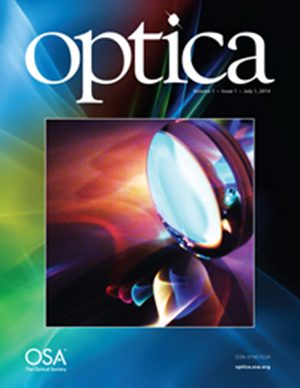用于优化控制光子电路的可扩展机器学习辅助清盒鉴定
IF 8.5
1区 物理与天体物理
Q1 OPTICS
引用次数: 0
摘要
光子集成电路为光的产生、操作和检测提供了一个紧凑而稳定的平台。它们在经典和量子应用中发挥着重要作用。由于制造限制、公差和工作波长造成的缺陷限制了当前光子集成设备的精度,从而影响了其实用性。要减少这些缺陷,通常需要建立底层物理结构模型,并对难以获取的参数进行估算。目前,对于超出琐碎情况的网格配置,还缺乏直接的解决方案。我们引入了一种可扩展的创新方法,通过迭代机器学习辅助程序来表征光子芯片。我们的方法基于一种透明盒方法,利用一个完全建模的光子芯片虚拟复制品进行表征。该过程具有采样效率高的特点,可使用连续波激光器和功率计进行。该模型可估算出单个无源相位、串扰、分光器反射率值以及相对输入/输出损耗。在精确表征结果的基础上,我们减少了缺陷,从而增强了对器件的控制。我们在装有 126 个移相器的 12 模克莱门茨干涉仪上验证了我们的表征和缺陷缓解方法,在 100 个已实施的哈尔随机单元矩阵上实现了超越最先进芯片控制的平均 99.77% 的振幅保真度。本文章由计算机程序翻译,如有差异,请以英文原文为准。
Scalable machine learning-assisted clear-box characterization for optimally controlled photonic circuits
Photonic integrated circuits offer a compact and stable platform for generating, manipulating, and detecting light. They are instrumental for classical and quantum applications. Imperfections stemming from fabrication constraints, tolerances, and operation wavelength impose limitations on the accuracy and thus utility of current photonic integrated devices. Mitigating these imperfections typically necessitates a model of the underlying physical structure and the estimation of parameters that are challenging to access. Direct solutions are currently lacking for mesh configurations extending beyond trivial cases. We introduce a scalable and innovative method to characterize photonic chips through an iterative machine learning-assisted procedure. Our method is based on a clear-box approach that harnesses a fully modeled virtual replica of the photonic chip to characterize. The process is sample-efficient and can be carried out with a continuous-wave laser and powermeters. The model estimates individual passive phases, crosstalk, beamsplitter reflectivity values, and relative input/output losses. Building upon the accurate characterization results, we mitigate imperfections to enable enhanced control over the device. We validate our characterization and imperfection mitigation methods on a 12-mode Clements-interferometer equipped with 126 phase shifters, achieving beyond state-of-the-art chip control with an average 99.77% amplitude fidelity on 100 implemented Haar-random unitary matrices.
求助全文
通过发布文献求助,成功后即可免费获取论文全文。
去求助
来源期刊

Optica
OPTICS-
CiteScore
19.70
自引率
2.90%
发文量
191
审稿时长
2 months
期刊介绍:
Optica is an open access, online-only journal published monthly by Optica Publishing Group. It is dedicated to the rapid dissemination of high-impact peer-reviewed research in the field of optics and photonics. The journal provides a forum for theoretical or experimental, fundamental or applied research to be swiftly accessed by the international community. Optica is abstracted and indexed in Chemical Abstracts Service, Current Contents/Physical, Chemical & Earth Sciences, and Science Citation Index Expanded.
 求助内容:
求助内容: 应助结果提醒方式:
应助结果提醒方式:


